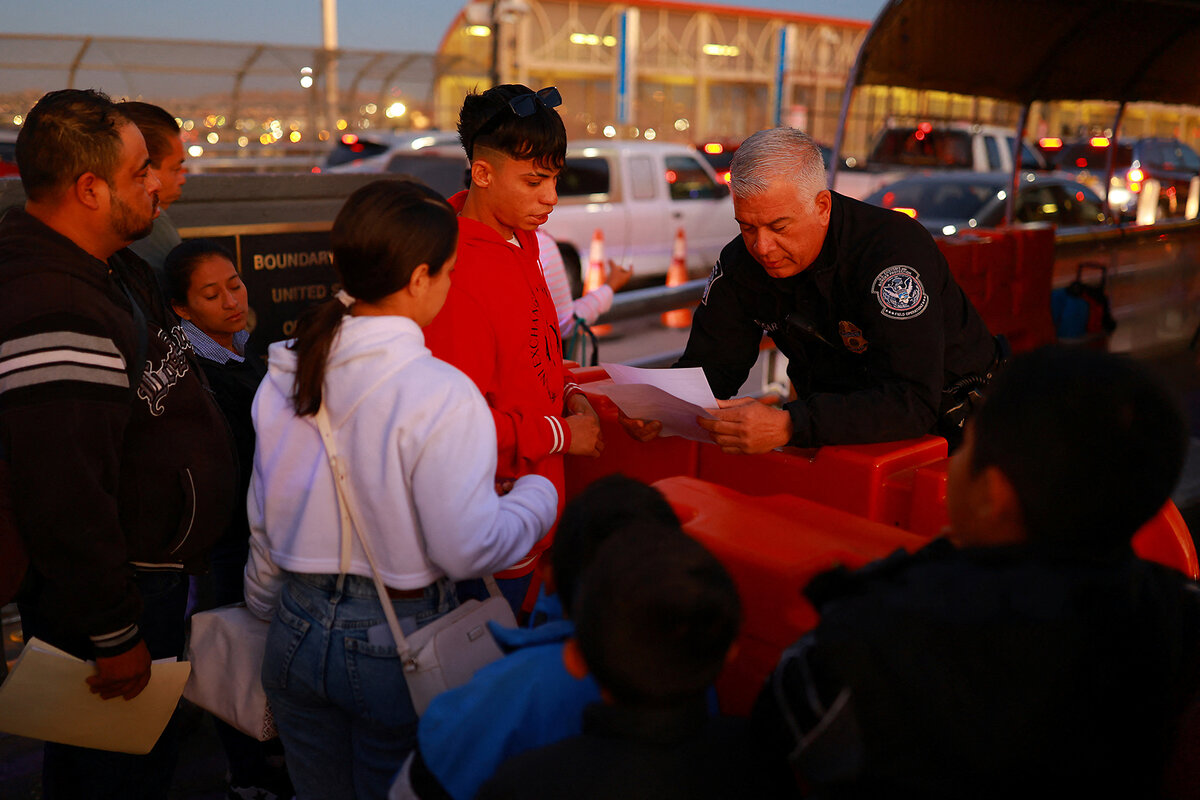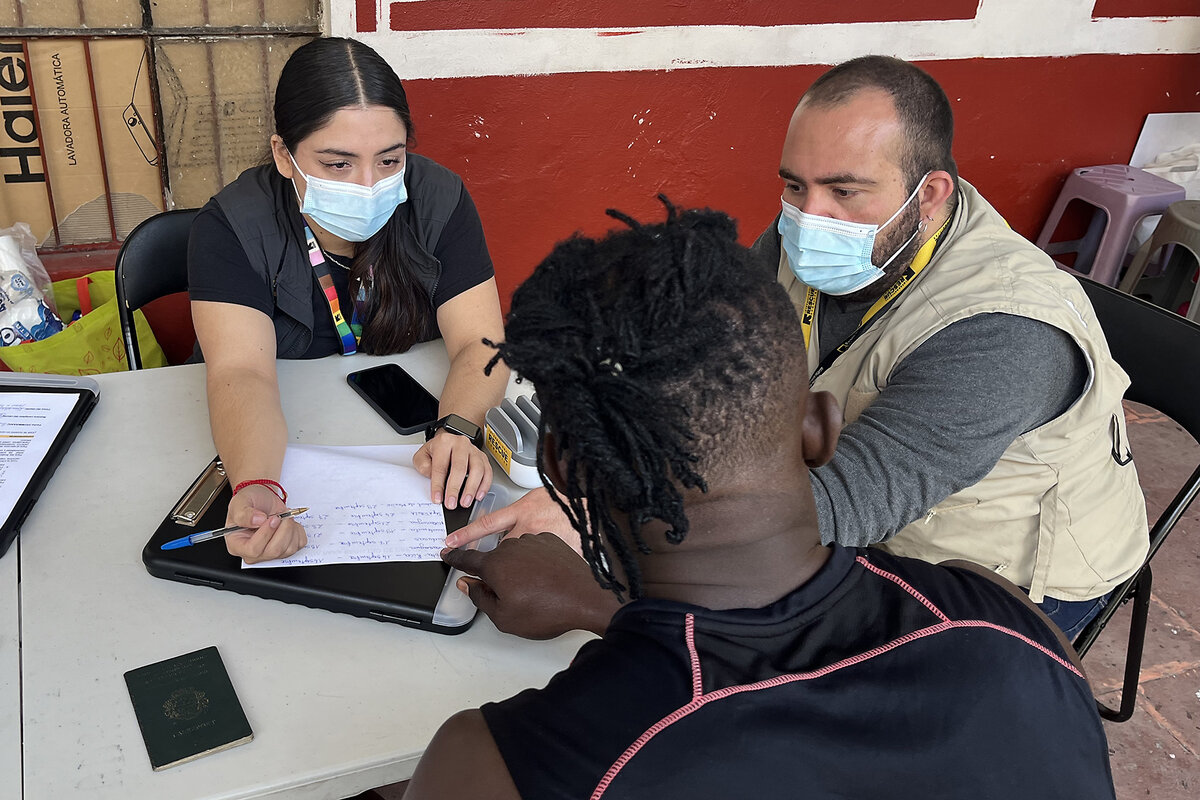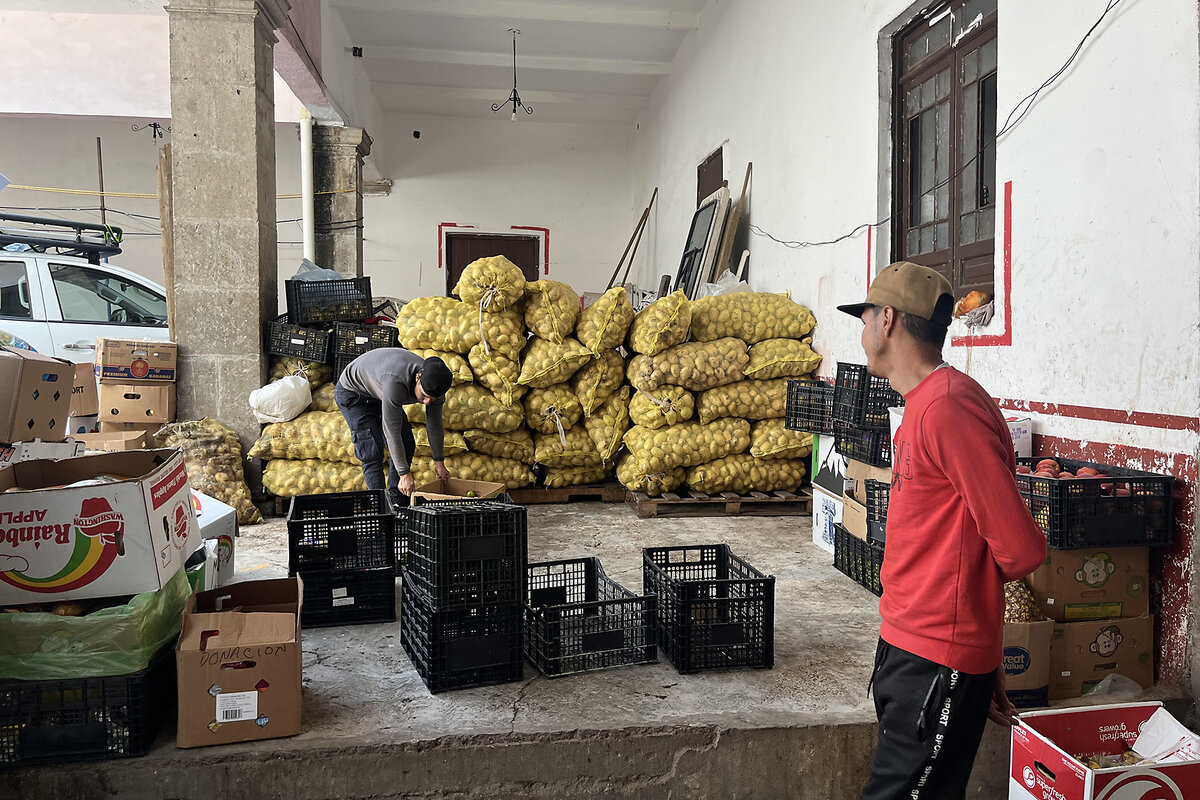Immigration is not just a US challenge. But on eve of election, it feels that way.
Loading...
| Mexico City
Illegal immigration is an electoral lightning rod of the 2024 presidential race in the United States.
But debates over “criminal” migrants, mass deportations, and American sovereignty obscure a more complicated reality. In particular, who wants to come to the U.S. – and why – has shifted massively in recent years.
Between 1999 and 2009, men from Mexico, often traveling alone as they jumped over the border or waded across the Rio Grande in search of jobs, made up some 90% of those arrested for trying to cross into the U.S. irregularly.
Why We Wrote This
The issue of immigration in the U.S. is tumultuous. But underneath the noise, a sea change has occurred that receives far less attention.
Over the past decade, global conflicts, natural disasters, and the COVID-19 pandemic have brought a much vaster and more diverse group of people to America's southern border. Today entire families flee political oppression, organized crime, war, natural disaster – and poverty. They’re coming not only from Latin America, but also from as far away as China and Sierra Leone.
Yet the discourse around immigration and asylum-seekers remains stuck in a stubborn binary: “black and white, legal vs. illegal,” says Jennifer Van Hook, a professor of sociology and demography at Penn State and fellow at the Migration Policy Institute. The reality, she says, is “murkier.”
And that has implications for the way immigration is accepted, or not, and perceived in the U.S. “There’s a tendency to disregard circumstances in wanting to classify people,” Dr. Van Hook says.
A complex portrait
Take Springfield, Ohio, which gained national attention this year after candidate Donald Trump claimed its growing Haitian population was “eating” the town’s pets.
Many immigrants there have temporary protected status – which grants provisional rights to work and live in the U.S. – yet the discourse centered firmly on America’s problem with “illegal immigrants.”
No group understands the diverse needs and motivations of the constantly changing immigrant population heading to the U.S. better than humanitarian workers in Mexico.
On a recent early morning in Mexico City, two men from the International Rescue Committee (IRC) secure tables, a medical privacy screen, and a satellite Internet kit to a flatbed truck with neon-green straps. These new “mobile units” respond to migrants spread across the country, not just those hunkered at the northern border. They provide access to phone charging stations and information about migrant rights or new technology in the asylum process.
The unit pulls up to the back door of one of the oldest churches in the historic center of Mexico City. Nearby, hundreds of mostly African, Haitian, and South American migrants live in tent camps.
IRC protection officer Carolina Álvarez Barajas helps an asylum-seeker from the Republic of Congo, whose name we aren’t publishing for his privacy, download an application on his phone. But she needs help from someone on her team who can translate for her from French.
Although the app, called CBP One, is the first step for an appointment at a port of entry before filing for asylum, it is available only in Spanish, English, and Haitian Creole, languages that are essentially useless to scores of migrants here today from Africa who speak French or Portuguese.
The Congolese man, who says death threats forced him to flee home, selects Spanish on CBP One and screenshots the buttons he’s supposed to press to check in on the app daily until he’s assigned a date to travel to the border for an interview. He expects it could be months.
Not just an American challenge
Mr. Trump has long railed against undocumented immigration, going so far as to call migrants “rapists.” Nearly 90% of his supporters favor mass deportation of unauthorized immigrants. Meanwhile, Democratic candidate Kamala Harris has faced widespread criticism for her perceived role in 2023’s record-high border crossings (which have since plummeted). She now says she supports a tougher crackdown.
But this isn’t an America-only challenge. Mexico is adjusting to record immigration numbers and its effects, too.
Over the past decade Mexico has formalized, under pressure from the U.S., the policing of migration on its southern border. As Border Patrol encounters have fallen since historic highs last December, apprehensions inside Mexico have grown: double in the first half of this year compared with the same period last year, according to the Danish Refugee Council and IRC. Amid restrictions on asylum-seekers in the U.S., Mexico has had to strengthen and expand its own system. It’s now among the top five receiving countries in the world for new asylum claims.
Hundreds of thousands of migrants are now coming to Mexico from across the globe and remaining longer – sometimes permanently. That has kicked up tensions in some neighborhoods in Mexico City and at the northern border. But unlike in the U.S., the population surge is met with more sensitivity in Mexico, says Eunice Rendón, Mexico coordinator of the Agenda Migrante initiative. Because of Mexico’s history as a country of migrants, “we have more empathy around what is driving people to leave home,” she says.
While anti-migrant voices in the U.S. focus on violence perpetrated by migrants, in Mexico they are clearly victims of it. In a migration reversal, amid an uptick in violence among cartels in southern Chiapas state, some Mexicans are crossing south into Guatemala for safety, says Rafael Velasquez Garcia, IRC’s Mexico country director.
Organized criminals target migrants to boost revenue by selling fake CBP One appointments or charging “exit fees” to move around the country, says Mr. Velasquez. They’re “now finding even greater opportunity with what we estimate [are] about a million people stranded in Mexico.”
“Anywhere else in the world where you have a million people stranded in an environment like this, we would recognize it as a humanitarian crisis and respond to that,” he says. “But right now, there is no humanitarian response plan. … The majority of the response is on the shoulders of local civil society.”
A family affair
In 2014 came a notable uptick in children and families arriving at the U.S. border from Central America, many fleeing violence and intentionally turning themselves over to border agents. That trend has only grown since the pandemic – with huge implications for humanitarian work in Mexico.
When a church in Mexico City, La Parroquia de la Santa Cruz y Nuestra Señora de la Soledad, began opening its imposing, hand-carved doors to migrants in 2017, volunteer Claudia Torres says they were still aiding mostly young men who were just passing through. By 2020, they were helping entire families with young children. Now they work with volunteer midwives who help deliver babies, sometimes even under the church’s roof.
“Families are more complicated,” says Ms. Torres, who sits on the church patio registering arriving migrants, including a young mother from Ecuador who walks in seeking to bathe her two sons.
Once the family walks away, Ms. Torres gestures for another volunteer to come near. “It was that little boy’s seventh birthday earlier this week. We’ll sing him the mañanitas,” she tells her, referring to Mexico’s iconic birthday tune.
By the time the boy’s mother has scrubbed behind his ears, there’s an impromptu party, complete with a tray of chocolate-covered marshmallows and a small crew of volunteers singing and cheering.
The boy beams.
This scene, as joyful as it is heartbreaking, bears little resemblance to the rhetoric on the American campaign trail.
Editor's note: This story was updated on Nov. 1, the same day as publication, to clarify the role CBP One plays in the asylum process.









